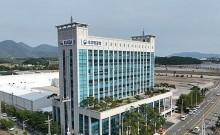
Taiwanese smartphone maker on Tuesday (25 march) finally pulled the wraps off the much anticipated 2014 marquee handset HTC One M8 in glitzy events held simultaneously in New York City and London.
The new HTC One M8 inherits the metallic uni-body design language as well as the UltraPixel camera technology from its predecessor with a bump in display size, metal usage, faster CPU and additional third snapper to compliment the main camera for in-depth focus.
To get a clear perspective between the two HTC One siblings, we have done a quick specification rundown of the both devices.
Design and Display:
Last month, HTC One M7 was declared as the best smartphone of 2013 (awarded by consortium of GSM association at Mobile World Congress 2014) trumping Apple iPhone 5S and Samsung Galaxy S4 for its zero-gap all metal (70 percent) airplane grade aluminum body and now its successor has further shed polycarbonate plastic content with the usage of metal increased to 90 percent giving a true premium shell cover.
In terms visual aspect, the new phone is bigger and curvier than the predecessor. It comes with 5.0-inch full HD Super LCD 3 screen, but the pixel density gets reduced to 440 ppi (pixels per inch) due to increase in the display footprint. Whereas, HTC One M7 had 4.7-inch full HD Super LCD 3 display having pixel density of 468 ppi.
Processor, RAM and Storage:
The second generation HTC One ships with latest 2.3GHz Snapdragon 801 (32-bit architecture) series processor with Adreno 330 graphics engine, whereas, its predecessor packs 1.7GHs Snapdragon 600 series CPU backed by Adreno 302 GPU
Both HTC One M7 and M8 house 2GB RAM and come in 16GB and 32GB storage with options for expansion. Only difference is that the new phone comes with DRR3 series physical memory and microSD slot which can be further expanded up to 128GB.
Camera:
In 2013, HTC One M7 got panned for its over glorified UltraPixel camera technology, it failed to mask the sub-par 4.0-megapixel camera, which came short against the rivals like Nokia Lumia 1020 (41-megapixel camera), Galaxy S4 (13.0-megapixel camera) and Xperia Z1 (20.7-megapixel camera).
Despite getting flogged, HTC has stuck to its UltraPixel technology in the new phone as well, but the company has incorporated an additional camera sensor on the top of the main camera module to capture detailed depth information of the scene enabling user to re-focus objects on the photos which are already taken via UFocus application.
HTC One M8 flaunts 4.0-UltraPixel dual-camera with dual-color LED flash (True Tone), 1/3'' sensor size, 2µm pixel size, HTC ImageChip 2, automatic simultaneous video and image recording, geo-tagging, face and smile detection, HDR, panorama and a 5.0-megapixel wide-angle front camera with BSI sensors, full HD video recording and HDR features
HTC One M7 houses 2.0-ultra pixel camera with BSI sensor, Pixel size 2.0 µm, Sensor size 1/3', dedicated HTC ImageChip 2, F2.0 aperture and 28 mm lens, OIS (Optical Image Stabilizations) and a 2.1-megapixel camera with HD 1080p video recording
Mobile Operating System:
With the latest Android v4.4.2 KitKat OS update already released for HTC One M7 (in India), there is no added advantage in owning the new HTC One M8 apart from new Sense v6.0 UI interface. New Gallery and the Zoe camera application has been made available for download at Google Play Store.
Value-added Features of HTC One M8:
- True premium Android smartphone with 90 percent metal usage.
- Duo-cameras with UltraPixel technology perform under all-light condition and the additional camera lens on the primary camera gives detailed depth information from a scene.
- LTE Cat.4 (category-4) for 50 mbps speed and also compatible with Indian LTE bandwidth.
- Extreme Power Saving Mode enables the smartphone to run close to 496 hours (14 days) under standby mode (3G).
Key specification of HTC One M7 and HTC One M8:
|
Model |
HTC One M7 |
HTC One M8 |
|
Display |
4.7-inch Super LCD 3 1920 x 1080p full HD resolution with RGB matrix Display, Corning Gorilla Glass 2 shield Pixel density: 468 ppi (pixel per inches) |
5.0-inch Super LCD 3 full HD (1920x1080p) screen with Corning Gorilla Glass 3 protection Pixel density: 440 ppi |
|
OS |
Android v4.1.2 OS (Jelly Bean), v4.4.2 KitKat update with Sense v5.5 released in select markets |
Android v4.4.2 KitKat OS with HTC Sense v6.0 UI (to get update for next two years) |
|
Processor |
Qualcomm Snapdragon 600 series quad-core processor with 1.7GHz CPU speed |
Qualcomm Snapdragon 801 series quad-core processor with 2.3GHz CPU speed (some select markets in Asia to be released with 2.5GHz CPU speed) |
|
GPU |
Adreno 320 |
Adreno 330 |
|
RAM |
2GB DDR2 RAM |
2GB DDR3 RAM |
|
Storage capacity |
Available in 32 & 64 GB (expandable memory slot only available in dual-SIM model) |
16GB/32GB, expandable up to 128GB |
|
Camera |
Rear: 2.0 -ultra pixel camera with BSI sensor, Pixel size 2.0 µm, Sensor size 1/3', dedicated HTC ImageChip 2, F2.0 aperture and 28 mm lens, OIS (Optical Image Stabilizations) Front: 2.1 -megapixel camera with HD 1080p video recording |
Main: 4.0-UltraPixel dual-camera with dual-color LED flash (True Tone), 1/3'' sensor size, 2µm pixel size, HTC ImageChip 2, automatic simultaneous video and image recording, geo-tagging, face and smile detection, HDR, panorama Front: 5.0-megapixel wide-angle camera, full HD video recording, HDR |
|
Battery |
2300 mAh (Li-Polymer battery); Talk time: Up to 18 hours for 3G Standby mode: Close to Up to 500 hours for 3G |
2600 mAh (Li-Po, non-removable battery); Talk time: up to 20 hours (3G) Standby mode: Close to 496 hours (3G) |
|
Network |
2G,3G & 4G/LTE in select markets |
3G & 4G-LTE Category 4 (50Mbps speed) |
|
Add-ons |
Zero-gap Aluminum (70-percent) Unibody case, Bluetooth v4.0,Wi-Fi hot spot, Wi-Fi (802.11 a/b/g/n/ac), NFC (Near Field Communication), HTC BoomSound(front-facing stereo speakers) |
Metallic body (90-percent)Nano-SIM, Bluetooth v4.0 (with A2DP), Wi-Fi (802.11 a/b/g/n/ac), NFC, microUSB v2.0, MHL, microSD card slot, BoomSound audio system, Infrared blaster, |
|
Dimensions |
137.4 x 68.2 x 9.3 mm |
146.4 x 70.6 x 9.4 mm |
|
Weight |
143 g |
160 g |
















